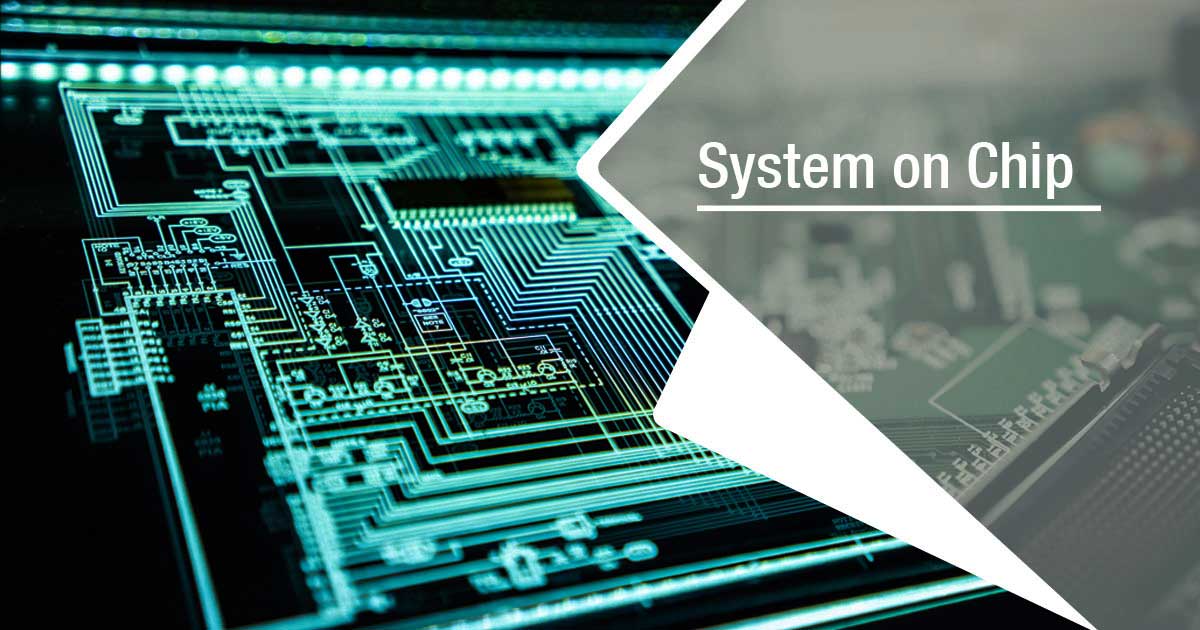A system on a chip, also known as SoC, is an integrated circuit that integrates all the components of a computer or other electronic system into a single chip. Modern SoCs typically include a microprocessor core, memory, input/output ports and additional functional elements previously included on stand-alone chips. The SoC concept has quickly proliferated in the semiconductor industry, owing to the benefits of decreased size, increased reliability, lowered power consumption and reduced cost of the individual chips.
Benefits of System on a Chip Technology
Reduced Size and Cost
Integrating the components of a device system into a single chip allows manufacturers to shrink overall product size. This leads to direct cost savings from using less PCB space and indirect savings from reduced assembly costs. SoCs also save on packaging costs associated with individual standalone chips. Overall, SoC technology enables the creation of smaller, more cost-effective electronic devices.
Lower Power Consumption
By incorporating multiple functions onto a single die, System On A Chip eliminate duplicate interfaces, buses and control logic required by discrete chips. This integration reduces power consumption compared to solutions using multiple chips. The proximity of functional blocks also decreases signal transmission power needs. SoCs are especially beneficial for battery-powered devices where low power is critical.
Increased Processing Performance
Modern SoCs achieve greater processing performance by integrating the microprocessor core, memory and peripherals into a single optimized environment. On-chip memory access improves speed by eliminating lengthy data transfer delays between separate ICs. This performance boost allows devices to carry out more complex operations using less battery power.
Embedded Systems Applications of System on a Chip
Mobile Devices
The smartphone has become the quintessential showcase of SoC technology. Leading-edge mobile SoCs integrate multi-core CPUs, graphics processors, LTE modems, WiFi/Bluetooth connectivity and more onto a single die. This level of integration enables the compact yet powerful devices consumers have come to expect. Future 5G SoCs will deliver even faster connectivity and low-latency edge computing.
Internet of Things (IoT)
With billions of connected devices expected by 2025, IoT is another major driver of SoC innovation. Tiny but powerful SoCs suited for energy-harvesting power sources are enabling new possibilities like ambient light sensors, smart agriculture technology and distributed industrial control networks. IoT SoCs must deliver low operating power yet sufficient processing for data analytics and connectivity.
Automotive Electronics
Modern vehicles rely on dozens of networked electronic control units to manage critical functions like engine systems, safety features and infotainment. SoC technology plays a key role in integrating complex driver assistance and navigation systems while meeting strict automotive reliability and longevity specifications. Future self-driving cars will require ultra-powerful SoCs for processing real-time sensor inputs.
Advantages and Limitations of System on a Chip Integrated Circuits
Advantages
Some key advantages of SoC integrated circuits compared to multi-chip solutions include:
– Reduced board area – Highly integrated SoCs take up less space on printed circuit boards than multiple individual chips.
– Lower power usage – Integrating components onto a single substrate cuts power lost to signal transmission between separated chips.
– Increased speed – On-chip communication avoids delays of signal propagation between individual ICs through buses and cables.
– Simplified design – SoCs streamline product design through reduced component count and simplified board layouts.
– Flexibility – Embedded programmability allows repurposing devices through software rather than hardware changes.
Limitations
While SoCs deliver significant advantages, some limitations remain:
– Development costs – Multifunction SoC design requires enormous ongoing investment in process technology development.
– Design complexity – Integrating numerous functions onto a single chip exponentially increases design complexities around timing analysis, verification and testability.
– Upgradability – Changing functionality requires full chip redesign rather than substituting individual components as in modular multi-chip designs.
– Thermal issues – High concentration of functionality creates special challenges for heat dissipation away from the concentrated active die areas.
Future Trends in SoC Design
While facing ongoing challenges, SoC technology continues its inexorable advancement driven by consumer and industrial demand. Future trends include:
– Specialization – Domain-specific optimized SoCs catered for applications like AI, 5G, autonomous vehicles rather than general-purpose processors.
– 3D integration – Advanced 3D packaging will integrate memory, analog and digital ICs to overcome the limits of 2D planar scaling through-silicon vias.
– Heterogeneity – Future SoCs will feature specialized processor cores optimized for different workloads to improve overall performance efficiency.
– Process advancements – Continued die shrinks to smaller nodes combined with new materials like gallium nitride enable further levels of complexity.
– Edge computing – Embedded AI processing and low-power high-bandwith connectivity allow sensitive data analysis to move from cloud to endpoints.
The integration of numerous functions onto a single chip lies at the heart of modern electronics. Further evolution of System on a Chip design and fabrication will continue maximizing benefits like low power usage, small size and real-time responsiveness required across various usage domains.
Note:
1. Source: Coherent Market Insights, Public sources, Desk research
2. We have leveraged AI tools to mine information and compile it



